
SAF Flight Initiative
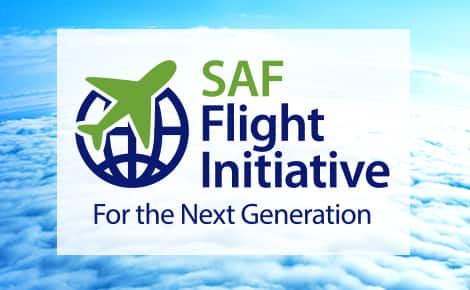
SAF Flight Initiative is a partnership program that collaborates with participating companies to promote the cross-industry use of SAF, thereby reducing CO2 emissions *1 within the value chain of the GHG Protocol Scope 3.
By joining, you can:
- Reduce CO2 emissions.
- Lead CO2 reduction across your entire business value chain (Scope 3) and differentiate your company in ESG initiatives.
- Use the CO2 reduction certificates issued by our company for calculating disclosure information required by TCFD, CDP, etc. (for inclusion in integrated reports, etc.).
- Contribute to a more sustainable society through the widespread adoption of SAF.
-
*1.On a lifecycle basis, SAF can reduce CO2 emissions by up to 80% compared to conventional fuels.
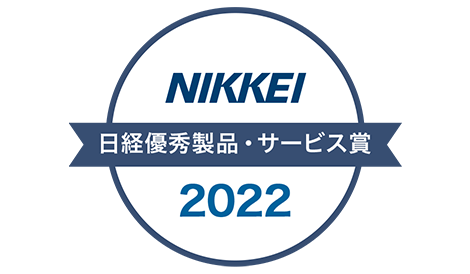
SAF Flight Initiative won the "2022 Nikkei Excellent Products and Services Awards" sponsored by the Nikkei Newspaper Co., one of Japan's leading economic newspapers.
SAF Flight Initiative partners

ITOCHU Corporation, Nomura Holdings, Inc., Japan Transport and Tourism Research Institute, PwC Japan LLC, Sumitomo Mitsui Banking Corporation, COSMO ENERGY HOLDINGS CO., Ltd., Kintetsu World Express, Inc., NIPPON EXPRESS Co., Ltd., YUSEN LOGISTICS Co., Ltd., MITSUI-SOKO EXPRESS Co., Ltd., Pegasus Global Express Co., Ltd., ISEWAN TERMINAL SERVICE Co., Ltd., Overseas Courier Service Co.,Ltd., Asian Express Service Co., Ltd., Nishi - Nippon Railroad Co., Ltd., ALPS LOGISTICS CO., LTD., NISSIN CORPORATION, SAGAWA EXPRESS CO., LTD., MARUWA UNYU KIKAN CO.,LTD., "K" LINE LOGISTICS, LTD., KYOCERA Corporation
Join the SAF Flight Initiative Programs
Please consider participating in the SAF Flight Initiative to contribute to a more sustainable society.
We have prepared two programs tailored to your needs.
Corporate program
For Business Travel
This will substantially reduce CO2 emissions due to business trips *1 by employees
- *1.Scope 3 Category 6
Cargo program
For Transportation & Distribution
This will substantially reduce CO2 emissions due to transportation and distribution (upstream and downstream) *1 in the business value chain
- *1.Scope 3 Categories 4 and 9
What is SAF?
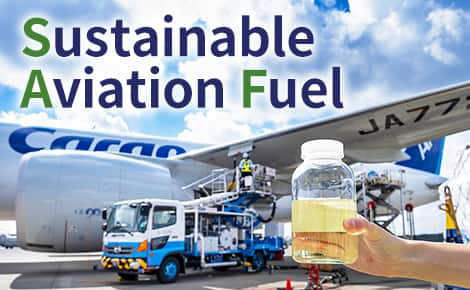
What is sustainable aviation fuel?
- SAF is a sustainable aviation fuel that can reduce CO2 emissions up to 80% compared to conventional fuels throughout its life cycle, from production and collection of raw materials such as biomass, waste cooking oil and exhaust gas, to production and combustion.
- SAF is crucial for decarbonizing air travel. However, with global production currently meeting only about 0.3% of total jet fuel demand, rapidly scaling up SAF production and wider adoption is a priority.
- To contribute to a more sustainable society, air transportation stakeholders need to cooperate to promote expansion of the use and production of SAF.
What is the GHG Protocol Scope 3?
The GHG Protocol is a joint initiative of the World Resources Institute (WRI) and the World Business Council for Sustainable Development (WBCSD). The Scope 3 standard, published by the GHG Protocol in November 2011, is a calculation standard for an organization's overall supply chain emissions. Its formal name is the "Corporate Value Chain (Scope 3) Accounting and Reporting Standard" and it is divided into 15 categories. Air transportation is in Categories [4] Transportation and distribution (upstream), [6] Business travel and [9] Transportation and distribution (downstream) of Scope 3 for customers.
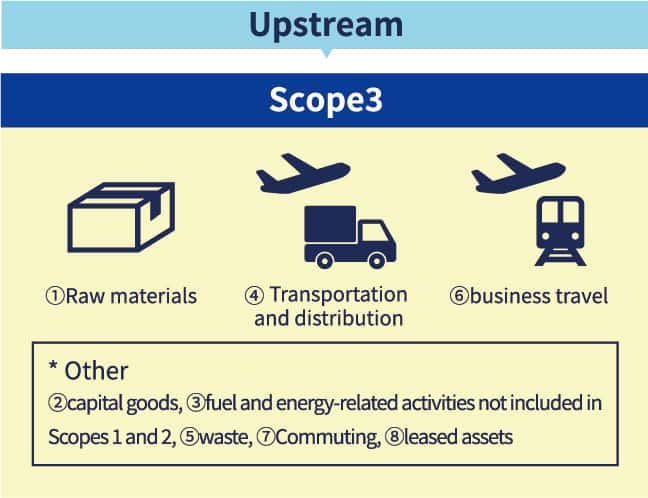
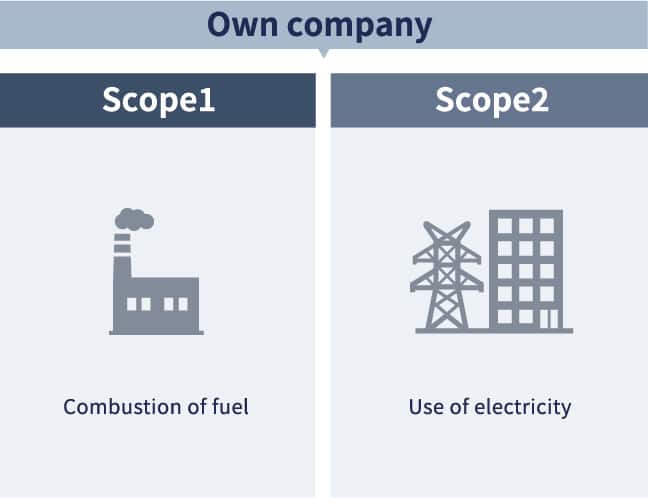
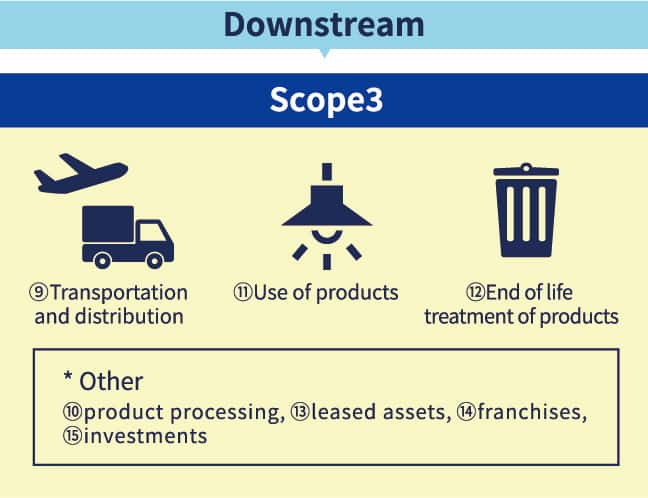
Supply chain emissions, which consist of Scope 1 (direct emissions), Scope 2 (indirect emissions from energy sources), and Scope 3 (other indirect emissions), divided into upstream, in-house, and downstream. Direct emissions of greenhouse gases by business operators (combustion of fuel, industrial processes) are in Scope 1. Indirect emissions associated with the use of electricity, heat and steam supplied by other companies are in Scope 2. Scope 3 includes other companies' emissions related to the business operator's activities, such as commuting, transportation and distribution, which occur upstream and downstream.
| Scope 3 Categories | Examples of Applicable Activities |
|---|---|
| 1. Purchased products and services | Procurement of raw materials, outsourcing of packaging, procurement of expendables |
| 2. Capital goods | Expansion of production facilities (if constructed or manufactured over multiple years, recorded in the final year, when construction or manufacture is complete) |
| 3. Fuel and energy activities not included in Scope 1, or 2 |
Upstream processing of procured fuel (mining, refining, etc.) Upstream processing of procured electricity (mining, refining, etc., of fuel used in power generation) |
| 4. Transportation and distribution (upstream) | Procurement distribution, tranportation between warehouses, shipping distribution (own company is shipper) |
| 5. Waste generated in operations | Transportation *1 and processing of waste (excluding valuables) not by own company |
| 6. Business travel | Employee business travel |
| 7. Employer commuting | Employee commuting |
| 8. Leased assets (upstream) | Operation of leased assets leased by the company (under the calculation, reporting, and publication system, most cases are not applicable as they are included in Scopes 1 and 2) |
| 9. Transportation and distribution (downstream) | Shipment (after shipment by own company), storage in warehouses, and sales at retail stores |
| 10. Processing of products sold | Processing of intermediate products by the business operator |
| 11. Use of products sold | Use of products by users |
| 12. End of life treatment of sold products | Transportation *2 and processing of products at the time of disposal by users |
| 13. Leased assets (downstream) | Leased assets owned by the company as lessor and leased to others |
| 14. Franchises | Activities that fall under Scope 1 and 2 of franchisees that own company presides over |
| 15. Investments | Management of stock investments, bond investments, project finance, etc. |
| Other (optional) | Daily life of employees and consumers |
-
*1.Under the Scope 3 standard and basic guidelines, transportation is an optional subject of calculation.
-
*2.Under the Scope 3 standard and basic guidelines, transportation is excluded from calculation, but it can be calculated.
Source: Ministry of the Environment
CO2 Reduction Certificates
CO2 reduction certificates can be used in the calculation of disclosure information required by the TCFD, CDP, etc. (and reflected in integrated reports, etc.)
- ANA receives the SAF manufacturer's CO2 reduction certificate from the supplier when it purchases SAF, and issues certificates linked and split to participating companies.
- The SAF CO2 reduction certificates supplied to ANA comply with the current EU Renewable Energy Directive and also include GHG reductions throughout the lifecycle.
- As to the calculation method for allocating Scope 3 emission reductions to specific companies, etc., we issue certificates whose transparency is ensured through certification by a third party organization.
- From the perspective of ensuring operational safety, SAF is currently regulated for mixing with conventional fuels up to a limit of 50%. Aircraft manufacturers have announced a goal of enabling 100% use of SAF by 2030.
- If there is a shortage, etc., of SAF supply in the future, we may reduce CO2 emissions in combination with other carbon credits. In that case, the breakdown of use and reliability will be stated on the certificate.
ANA's SAF Challenge
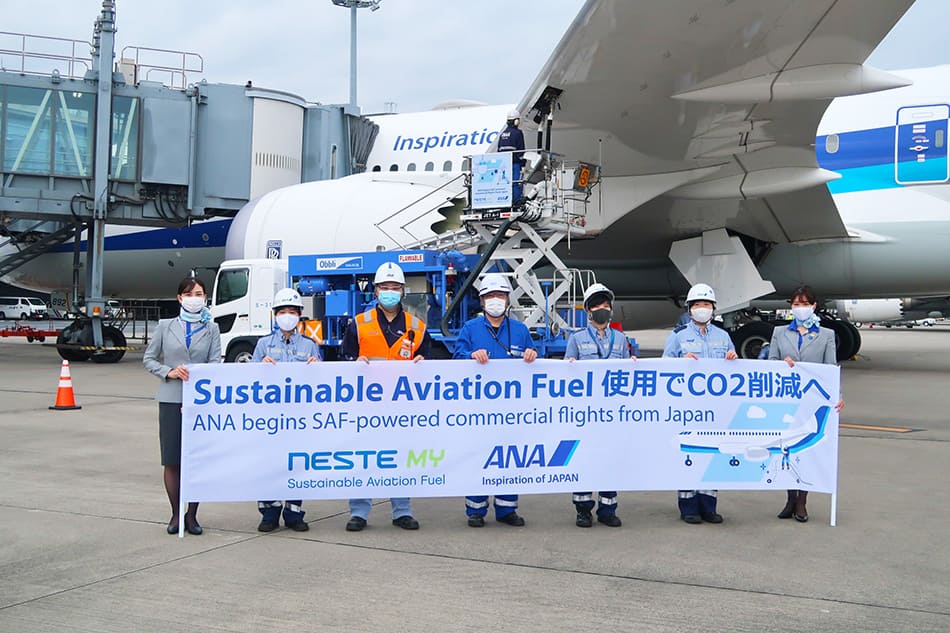
- 2012
-
World's first trans-Pacific flight using SAF.
- 2019
-
Used SAF for a new aircraft delivery flight to Japan, in collaboration with Mitsui & Co.
- 2020
-
Began a strategic partnership with Finland-based NESTE for mid- to long-term supply of SAF. Became the first in Japan to use SAF on regular flights departing from Haneda and Narita airports.
- 2021
-
Used domestically produced SAF manufactured by IHI Corporation as part of the NEDO project on regular flights departing from Haneda Airport.
Began using NESTE's SAF on regular flights departing from Haneda and Narita airports. - 2023
-
Selected for Tokyo Metropolitan Government's "Biofuel Utilization Commercialization Promotion Support Project", enabling continuous SAF use on Haneda-Hachijojima route from Dec. 2023 through FY2024 (first time in Japan to use continuously SAF on domestic regular flights).
- * The symbol "-" indicates the locations between which the route is operated.
- 2025
-
Concluded a procurement agreement with Cosmo Oil Marketing Co., Ltd., the first company producing domestic SAF in Japan.



